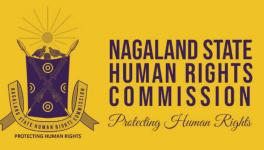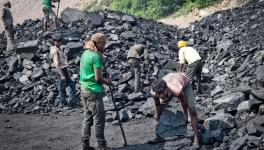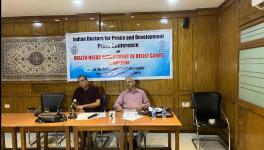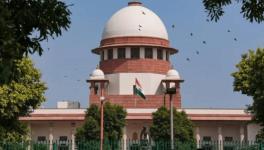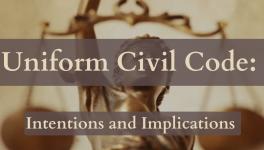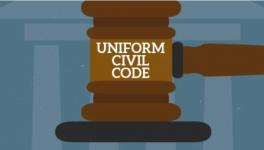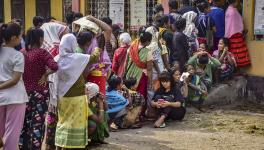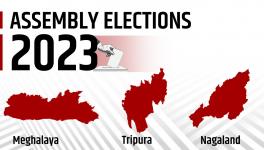The Treacherous Path of Nationhood
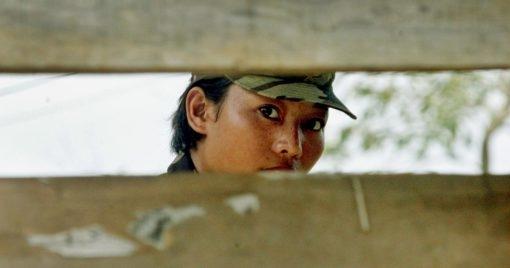
The Indo-Naga conflict is one that has lasted since the British left the sub-continent. The movement split several times along the way and for various reasons. The primary one being as per the allegations of Naga nationalists involved in the movement — whether overground or underground — that these splits were the handiwork of the Indian intelligence agencies. However, what has become very clear is that the movement was more progressive than previously believed. Though at present there is a heavy role being played by the church, in the past their role was not always appreciated by the Naga people. The post-Shillong Accord phase of the movement saw some socialistic principles entering the movement in terms of organisational structures and administration.
Ethnocentrism
Several of those involved in the movement including late Isak Chishi Swu commented on the fact that the Naga Home Guards — the armed wing of the Naga National Council (NNC) — also had Nepali or Gorkha recruits, as well as Meiteis, Assamese and south Indians. While the first three groups are expected due to geographical proximity, the south Indian recruits may have been from among those who had fled Burma during the Second World War and settled in the region. There did not appear to be general animosity towards Indian people as such. However, in the succeeding generations that appears to have changed, probably due to the excesses of the armed forces deployed to combat the Naga nationalists.
However, this animosity also seems to have been tackled when the recruits travelled to China for training. Those involved in the movement have not hinted at any training in China after the Shillong Accord was signed. Hence, all those who went for training must have gone during the NNC days. Once in China, apart from military training, the Naga nationalists were also given political training. Though they did not give up their Christian beliefs, the national workers appear to have imbibed some of these lessons from their political classes. For example, a recurring point was on how to recognise one’s enemy. For those who made the trip, the enemy was not the Indian people, but the Indian State.
Religion
In its initial phase, movement made no distinctions between Christians and non-Christians even though the slogan ‘Nagaland for Christ’ was coined then. However, following the Shillong Accord, the focus shifted towards conversions, particularly in Myanmar or Eastern Nagaland as the nationalists call the Naga inhabited region. It was here on one of the return trips from China that a group had their heads hunted when they stopped to rest at a village. Revenge was taken later when the National Socialist Council of Nagaland was formed by NNC members opposed to the Shillong Accord as well as the Eastern Naga Revolutionary Council, the Burmese chapter of the movement. Two of the village elders were executed for not admitting that they had killed almost the entire group.
Perhaps it was incidents like these, as well as the challenge posed by Rani Gaidinliu to Phizo (with Nehru’s backing) that prompted the movement to seek homogeneity in religious beliefs. At the time, many Nagas in Myanmar were either Buddhists or animists. Though both Thuingaleng Muivah and Isak Chishi Swu denied that any forceful conversions had taken place, there are some who admit that those who refused to convert were beaten.
Political Divisions
The first cracks to cause factionalism came when the Sema members of the movement felt that they had not received their due, and that all the top posts were being given to Angamis. This led to the creation of the Revolutionary Government of Nagaland (RGN) and the Council of Naga People (CNP) as opposed to Phizo’s Federal Government of Nagaland (FGN) and the NNC. They later surrendered to India and accepted the creation of the Indian state of Nagaland. It is alleged that the dissatisfaction among the Semas was exploited by the Indian intelligence agencies to bring about this result.
The next major division appeared with the Shillong Accord. This was trickier because Phizo had never publicly condemned the Shillong Accord.Thuingaleng Muivah was the General Secretary at the time and Isak Chishi Swu was the Vice President of the NNC. Phizo was in London at the time whereas Isak and Muivah had just returned from China. When Muivah called for a National Assembly in 1976 where resolutions were passed condemning the Accord, the Accordists detained both Isak and Muivah. The Accordists then made SS Khaplang the President of the FGN after which he went to visit Isak and Muivah. Though it was clear that the Accordists intended to execute the two men, after discussions with Khaplang they managed to convince him and turned the tables on the Accordists and escaped to Burma. In 1980 after several rounds of discussions, the three decided to merge the movement in the east and west under the National Socialist Council of Nagaland (NSCN). The administration would then become the Government of the People’s Republic of Nagaland (GPRN) and the armed wing, the Naga People’s Army. Both are clear indicators of influences picked from several trips to China.
The next split emerged when internal disputes between Isak and Muivah on one side and Khaplang on the other resulted in a fratricidal bloodbath. From the perspective of the Burmese Nagas, the Indian Nagas were too arrogant and condescending. From the Indian Naga perspective, the Burmese Nagas were too undisciplined and did not adhere to Christian values. Whatever the case may be, Khaplang attempted to have Isak, Muivah and their supporters killed. This plan failed and the NSCN became divided along these lines. As far as the blame for Khaplang’s actions go, those familiar with all the men involved have said that Khaplang was a person easily influenced. At that time the influence came from SC Jamir, the then Chief Minister of Nagaland.
The Present
At present the movement seems to have been split again between the eastern Nagas and the western Nagas. The first signs of a new crack arose in 2015 after the NSCN(IM) signed the Framework Agreement with the Government of India. The NSCN(K) abrogated their ceasefire and vacated their camps in India shortly after. Within a matter of months a coordinated attack was conducted in Manipur when a mixed group of armed cadres of various underground political groups from Assam and Manipur along with the NSCN(K) ambushed a military convoy. This was the first announcement of forming the United National Liberation Front of Western Southeast Asia (UNLFW). Though its previous avatar, the Indo-Burma Revolutionary Front (IBRF) did not last long, this new grouping seems to have.
The Khaplang faction however went through another split a year after the death of Khaplang. Through a coup, Khango Konyak was expelled and he left for India along with his supporters, except this time there were no fratricidal killings. Konyak later joined the peace talks as the NSCN(K). Despite regular assurances that a solution is in sight, there is a chance the new governor of Nagaland, RN Ravi who is also the Government of India’s interlocutor will play a decisive role in shaping the future course. Either by carrot or by stick.
The article has relied heavily on Kuknalim: Naga Armed Resistance; Testimonies of Leaders, Pastors, Healers and Soldiers by Nandita Haksar and Sebastian M Hongray.
Get the latest reports & analysis with people's perspective on Protests, movements & deep analytical videos, discussions of the current affairs in your Telegram app. Subscribe to NewsClick's Telegram channel & get Real-Time updates on stories, as they get published on our website.











